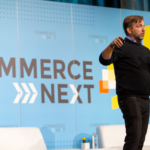It’s a busy world out there for the IT professionals in retail. Between rapidly developing technologies and economic challenges, they’ve got their hands full. Here to talk about the current state of IT, innovation and omnichannel strategies is Hani Batla, CIO/CTO at Adorama. As one of the largest specialty retailers for consumer electronics and professional audio reading photography, Adorama has been through some exciting adaptations and developments over the last few years.
Read on for the full interview with Batla, as we discuss key challenges, technological trends, the integration of ecommerce and physical retail and more.
Katja Teichmann: What are one or two challenges you’re facing right now as a CIO?
Hani Batla: The biggest challenge I’m facing is the impact of the current economic climate. We are one of the largest specialty retailers for consumer electronics and professional audio/video/photography and the last year has been a challenging one for folks in our space. NPD data shows that electronics was the second most discounted product category over the last holiday season this year. We do see some demand but it’s not where we want it to be.
To go along with that, over the last few years, when things were growing tremendously, we built out a team to capitalize on that growth and ride the wave. The problem is that the waves died down, so now we’re in a spot where we know another wave is going to come but in the meantime, there’s these pressures to continue to tighten your belts, or pull back on certain investments. It’s very painful to undo some of the good work or things you’ve layered in. It’s challenging to have the right org and to have to make some painful decisions. It’s just a tough time to be operating, but it’s not just us. It’s a general challenge in the industry.
Teichmann: How has this impacted how you’re interacting with customers?
Batla: One of the greatest opportunities for growth we’ve identified in our space is our used business. We’ve always been critical to the community of creators: videographers, podcasters, etc. We’ve also found that there’s always professionals who will want the latest gear because it unlocks something extra for them. But by that same measure there’s lots of folks who want to continue to up their game but they don’t need the latest model camera. They could be more than happy doing their craft with one model below that, and it could be significantly superior to whatever they already have. Our customers are being thrifty with their dollars and getting maximum value, and our used business is actually geared to unlock that for them. We are building a better experience so that they can actually trade in what they already have, and invest that into the gear that they want.
Teichmann: Can you identify one or two other technological trends that are currently shaping the retail industry, and their impact on your customer interaction?
Batla: I have to call out the big one right now which is generative AI. As the CIO/CTO it’s top of mind because I have executives up and down the org asking, “How can we leverage this? Does this give us an edge or an advantage?”. I still am cautious to say what impact it will have on the retail business now, leading up to the holiday season, but I think long term it will have an impact.
My own personal take on it is there’s tremendous value to be gained across the board whether it’s productivity on our development side of things or on the product content side of things to enhance our business. The next level unlock for us is where we continue to empower, equip and educate the creators in our community. If you’re an engaged member of the community you have access to all our content articles, videos, resources and events, but for a less engaged audience it can be more work to discover all those resources to find the answers they’re looking for. Buying camera equipment is expensive, so there is a long research process on our PDP, reading reviews, watching the content, but more than half the time they still have to go somewhere else to find additional information before making their purchase. With generative AI, you can reduce the research process, and make the customer’s discovery, learning and education better and more efficient so they can walk away more intelligent and make those decisions. My goal is to improve the consideration process and bring the knowledge internally so people can do their research and have a conversation with an AI driven expert. I want them to truly unlock the value of their investment when they purchase with Adorama.
I think we’re always attracted to the shiny, but I am of the mindset that sometimes we just have to go back to the basics. The most critical part of what we’re doing to provide a truly magical customer experience is transparency and better communication. Our focus continues to be, what can we leverage to improve that conversation with our customers and give them the information more easily while optimizing for costs internally? We all know how expensive it can be to have a customer call a live agent, just to ask WISMO or something simple like that. There’s a whole host of technologies that are coming up to improve that experience—they’re not fancy but they’re iteratively better than what has been out there. We’re bringing more transparency into the process, and are constantly looking to optimize those conversations using all the tools and technology available. It’s not the shiny stuff, but it’s the focus on the basics to further enhance your customer’s experience.
Teichmann: How do you decide which technologies are worth adopting for your retail operations?
Batla: My personal strategy is to not pivot constantly and keep changing when a new technology comes onto the forefront. What we do very well as a team is that if there is something that sparks an interest either with me or anyone in my team, we’ll commit a little bit of time and resources to vet it out before it becomes something we dedicate a larger set of resources to implement. The core team should still be focused on the biggest value for our customers and business, and we’ll reserve some bandwidth to do some side exploration.
We look at new technologies through the lens of, in the near term, can we just put it through the classic lens of how does this help my customer? When you think of it that way, it makes you pause and really think about it. You can look at the technology and oftentimes it could be exciting and a potential game changer, but it’s not mature enough so you have to wait to adopt it until the time is right for your business. As exciting as it is to be the first mover, sometimes you have to have the maturity to let it play out a bit more, see if other people do something interesting, and then you can do it better.
Teichmann: How do you see the integration of ecommerce and physical retail evolving? Do you have any strategy tips for providing a seamless omnichannel experience?
Batla: I’ve always been a fan of both physical retail and online commerce. There was a time when everybody was kind of declaring the death knell for physical stores, and we’ve all learned that that’s not true. I think in Adorama’s case we are unique because we only have one physical store in New York City. We had a lot of folks internally who were of the mindset that maybe we do want to expand our physical footprint, but not from a traditional retail perspective. You have to think of it as creating a space for bringing your community together—in our case that’s the creators, who want to attend events or classes where they can touch the latest piece of gear and play with it and find the value of products.
If you have the ability to have a bigger footprint, both physical, and then also online, it’s a great place for a lot of retailers to just use it as a place to bring in their biggest fans or their community. Not just so you can have a conversation and another touch point with your consumer, but so they can connect with each other too. When you have these in-person experiences, you do need to be prepared from an omnichannel perspective so the customer isn’t limited to what is stocked in person, but can walk out with the product already on the way to their house if they want to purchase something else. As retailers work to perfectly sync up in-person and online experiences, omnichannel will just keep getting better.
Teichmann: Can you share a marketing tip for the community?
Batla: I’ll give you one that is marketing and technology combined: Be smart about how you engage your customer so you don’t burn out your customer or become noise. You really need to understand your customer, and know how your technology can help you achieve your goals (i.e. take advantage of that beautiful first-party data).
Related Posts
-
Precision and Personalization: The Future of Chatbots with Conversational AI
Conversational AI has emerged as a game-changer in the realm…
-
Exploring the Power of Omnichannel Retail with Trina Turk and Amazon Today
The CommerceNext 2023 Ecommerce Growth Show was full of insights…
-
Retail Omnichannel Strategy: How to Meet Multi-Channel Demands
Retail is evolving everyday. Today, it is now a dynamic…




